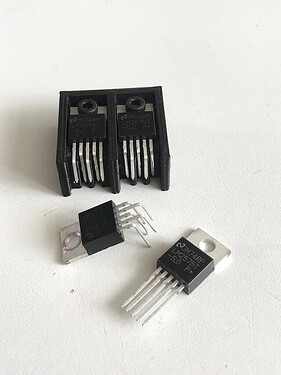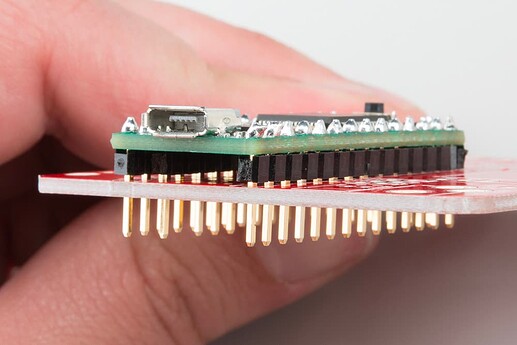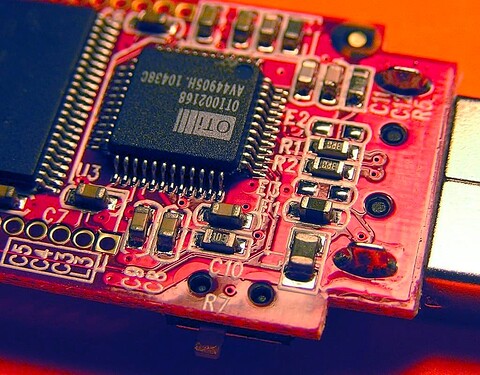@Dev_S – Basically there are two kinds of PCBs
- Single Layer
- Multi-Layer
It will be easier to understand the “layer” once you understand the types of electronic components. There are broadly two:
- Through Hole
- Surface Mount Technology
Through Hole v/s Surface Mount: Every electronic that goes on the board usually has legs. A leg is the shiny silvery part of the component where the soldering is done. For example: in the image below, you can see 4 or 8 thin silver strips.
The above image is for through-hole components. They get the name because the board has to be drilled to make a hole so that their legs can be put across the board and soldered on the other side. For example: in the image below you can see how the component has occupied two sides of the board (on the leg-side, soldering will be done).
The surface mount components are the ones where “no hole” is needed to be drilled. Rather, the components just sit on the same side as the circuit (in the image below you can see that the legs are soldered on the same side as the component’s head).
Importance of SMT: There is no need to drill holes. You can have two separate circuits (or even more) on the same PCB. Further, as of today, SMT components are much smaller in size as compared to through-hole components which means we can have smaller devices. How much size reduction are we talking about? I doubt that we could ever have a pocket-sized smartphone if it has to be built with through-hole components. There are other differences but for this post’s sake, I’ll keep it here only.
So now, let’s understand a layer. A layer is the side of the PCB which contains the circuit (the shiny silvery path) and the components.
So, what is a multi-layer PCB? Imagine a PCB with xyz components. Now you stack another PCB on top of it. This is adding a layer. Now for the exact definition, a multi-layer PCB is basically a single board that has multiple layers of circuits and components. As a viewer, you may not be able to see all the layers as it’s usually inside the board while you can only see the inner and the outer layers
Modern systems usually have multi-layered PCBs. Through hole still exists but majorly where a cost reduction or low-end system is needed (the cost parameter can be debatable). Apart from our TV remotes (if old) and inverters (if old), I can’t think of a device that is available in our homes and is made only with through-hole components or has a single-layer PCB only ![]() .
.
It would be very difficult to fit a complex through-hole-based system in the limited space of an automobile – not unless the OEM is happy to serve a low-end bulky product to the end-user (Definitely not in a system as Tesla would have)
Source: I used to work as an engineer in an electronics system-making company. Have designed systems for a pilot project of H_L’s Pure-It, Chai P_int’s Coffee machine, ZoomC_ar’s vehicles. We would design our circuits in India and get the multi-layer PCBs imported from China. Doing it in India was unsustainably costly.
| Subscribe To Our Free Newsletter |





